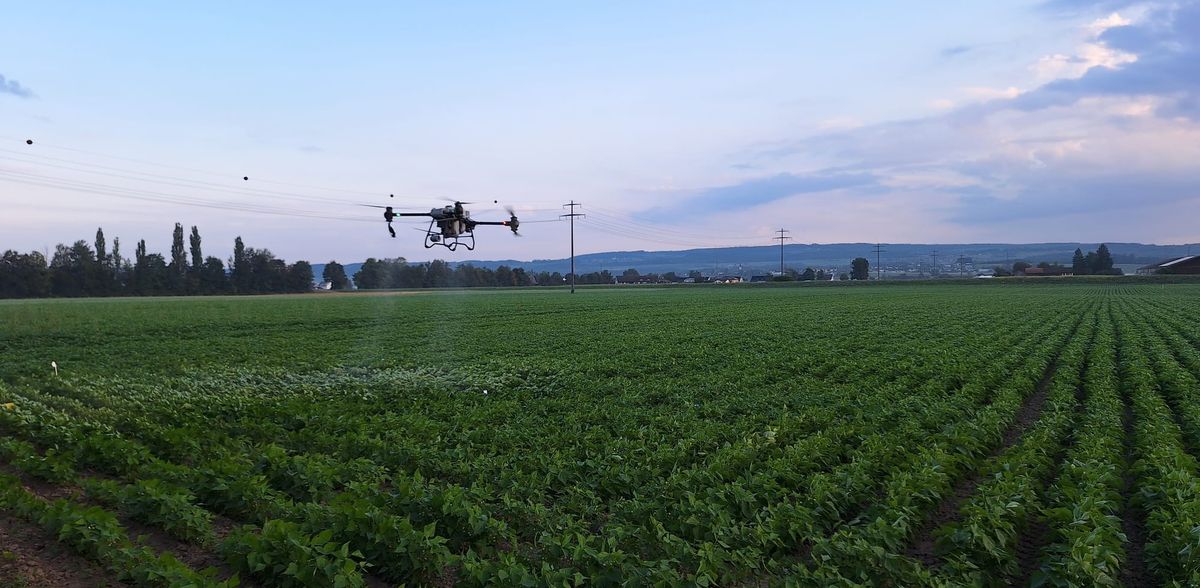Owl caterpillars threaten bean harvests
Hilcona: Drone use with biocompatible crop protection products as a possible solution
Advertisement
beans have been one of Hilcona's most important processed vegetables for almost 90 years. Many farms, not just Hilcona producers, currently have their hands full with a new pest. Due to the warm temperatures, the so-called owl caterpillar is multiplying rapidly in the domestic bean fields. The consequences can be extremely serious damage. There are various approaches to counteracting the increasing pest pressure. One of these is the use of new technologies, such as drones.
Preventing total losses in bean fields
The owl caterpillars are normally native to the Mediterranean region. When the caterpillars pupate into moths, they are masters of flight. They can travel up to 1000 km at high altitudes and even fly over the Alps. Once they arrive in their native regions, they are attracted by flowering bean fields and lay their eggs there. Young, voracious caterpillars hatch from the eggs and love to eat the small seeds in the beans. They do this by drilling one or more holes in the bean. Infestations have increased massively in the last two years, resulting in total losses in bean fields.
Together with bio-compatible plant protection products against the owl caterpillars
Nobody wants to buy beans with holes in them, which is why bean stocks need to be protected. Hilcona is playing a leading role in a project that aims to answer precisely this question. The project is supported by the SCFA (Swiss Convenience Food Association) and accompanied by Agroscope. Various biocompatible plant protection products are being tested and their effects compared.
Initial results: Promising drone applications
As the moths lay their eggs on the underside of the leaves of the bean plant, the active substances should also reach the underside of the leaves. But how? Stefan Däster, cultivation advisor at Hilcona Agrar, noticed during a drone spray application in red cabbage that the drone's air vortex caused the rigid, large leaves of the red cabbage to move considerably. "This gave rise to the idea of using this drone effect and the resulting better misting of the bean crop to achieve a better effect. The results are very promising," explains Stefan Däster.
Note: This article has been translated using a computer system without human intervention. LUMITOS offers these automatic translations to present a wider range of current news. Since this article has been translated with automatic translation, it is possible that it contains errors in vocabulary, syntax or grammar. The original article in German can be found here.






























































